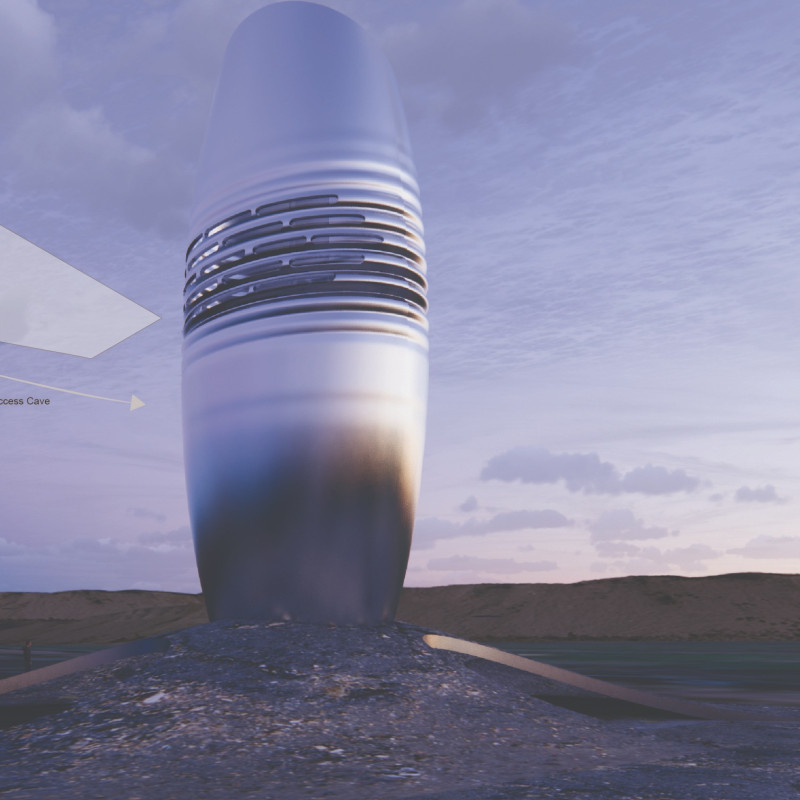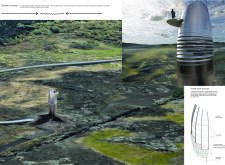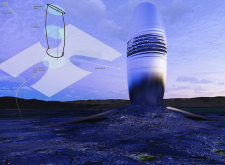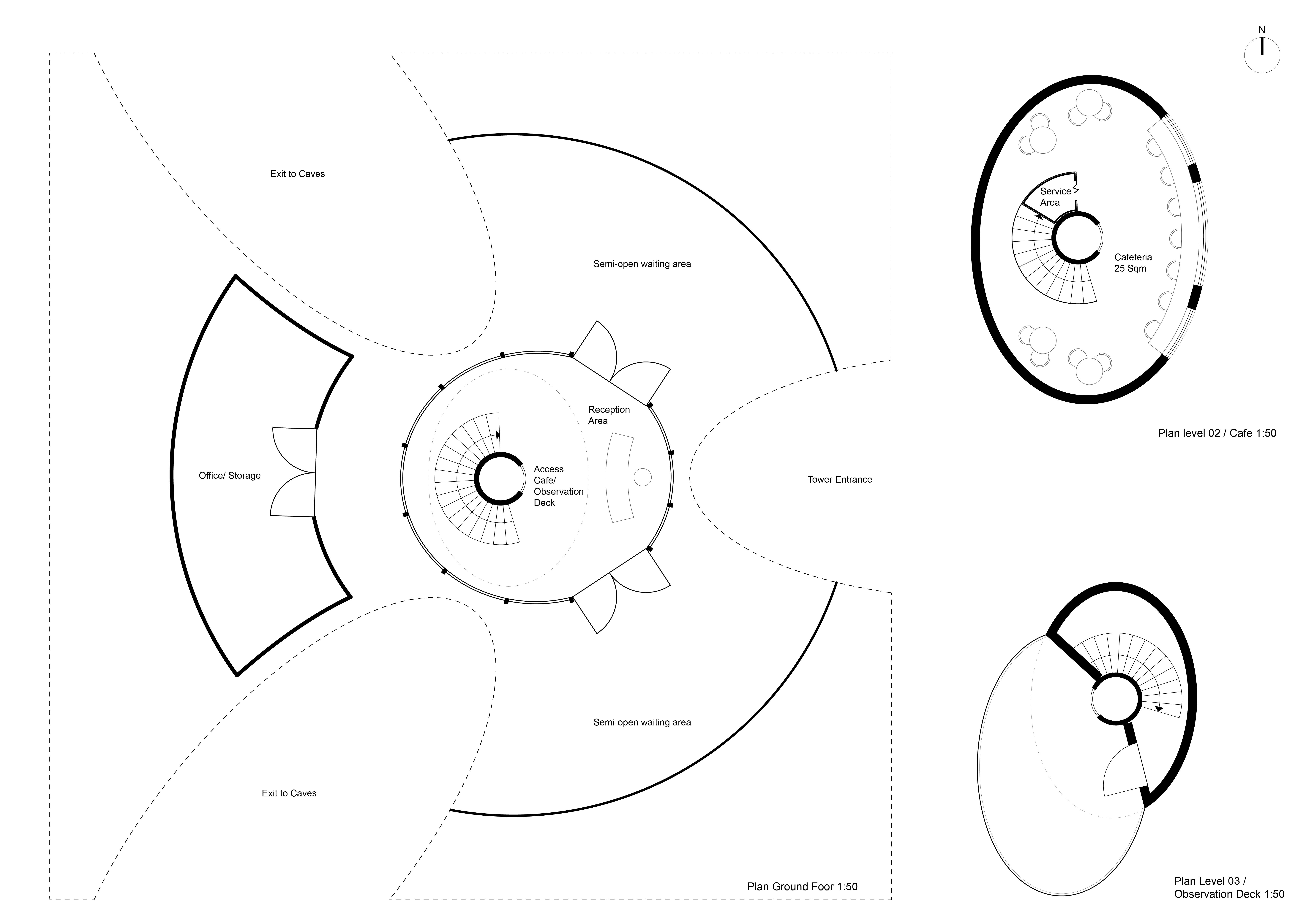5 key facts about this project
The project represents a bridge between human exploration and the natural world, emphasizing the importance of context in architectural design. By integrating seamlessly with its geological surroundings, the tower fosters a connection between visitors and the landscape it inhabits, while facilitating the experience of observing the natural beauty of the area.
One of the defining features of this tower is its innovative use of materials. The primary façade is clad in stainless steel, allowing for durability and a reflective quality that harmonizes with the natural landscape. Glass elements are strategically placed within the observation deck to maximize views and natural light. Additionally, the use of steel-reinforced concrete in the foundation ensures a solid structural integrity, essential for a building in a location that may experience challenging weather conditions.
The space planning of the tower is equally notable, containing various functional areas such as a reception space, a cafeteria, and an observation deck. The traffic flow has been designed to encourage interaction, allowing visitors to experience the structure in a dynamic manner. The spiral staircase connecting the various levels promotes an exploratory experience, inviting users to discover different perspectives as they ascend.
The design distinguishes itself from typical observation towers through its emphasis on sustainability and environmental integration. The use of geothermal insulation materials enhances energy efficiency, aligning with broader architectural goals of reducing ecological impact. Furthermore, the shape and materials of the tower contribute to its environmental resilience, ensuring that it withstands the elements while minimizing its footprint.
Unique design approaches within this project include the focus on mirroring natural forms and textures, creating a dialogue between the built environment and its natural surroundings. This tower does not impose itself on the landscape but instead complements it, allowing the geological features to be part of the user experience.
The project is a prime example of contemporary architectural practices that value ecological sensitivity and functional design. For those interested in a detailed understanding of this architectural endeavor, exploring the architectural plans, architectural sections, and architectural designs will provide deeper insights into the innovative ideas driving this project.


























